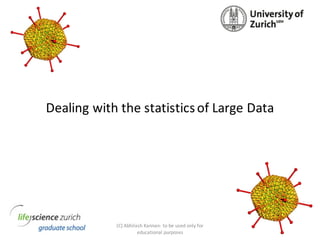The document describes an experiment measuring E1A cytoplasmic intensity in A549 cells infected with varying amounts of wild Ad5 virus for different time periods. Permutation resampling analysis was used to detect associations between infection time and E1A intensity. The analysis found significant differences in E1A intensities between 11hr, 7hr, and 4hr infection times for different virus concentrations, though some technical replicates also showed significant differences. The permutation method involved randomly sampling from combined experimental groups to generate a null distribution and calculate p-values.





















